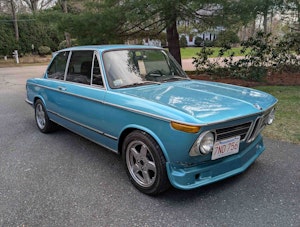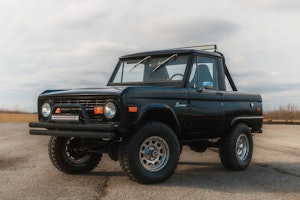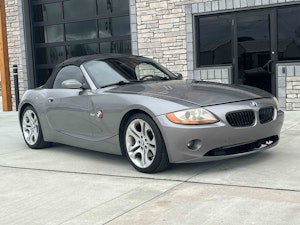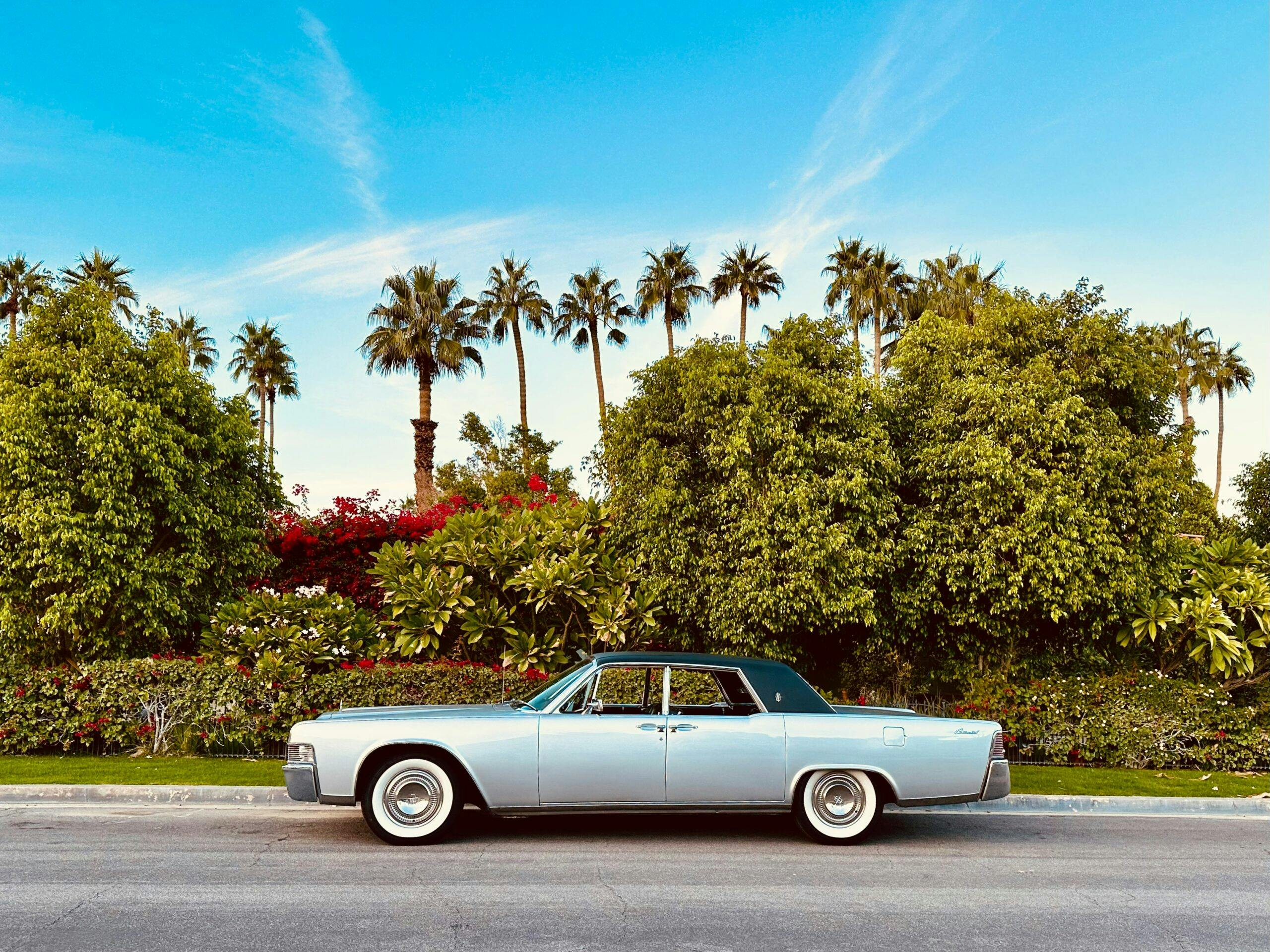Media | Articles
“Leno’s Law:” New Bill Would Exempt California Classics from Smog Checks
Change may be afoot for Californians who own classic cars. A new bill would make life much easier for the thousands of enthusiasts in California by amending the state’s stringent smog rules, which currently mandate smog checks for vehicles built in or after 1976. If passed into law, California Senate Bill 712 would “fully exempt” any vehicle that was made at least 35 years ago, if it were insured as a collector vehicle.
Naturally, California’s most famous classic-car fan, Jay Leno, is all for the change. He’s even agreed to promote the bill. It’s been nicknamed “Leno’s Law.”
“California’s rich classic car culture, sparked by the post-war hot rod boom and boosted by Hollywood’s love for chrome and horsepower, has made it a paradise for enthusiasts like me,” said Leno to NBC Los Angeles. “California’s smog check laws for classic cars need to be updated—they vary too much from state to state, and California’s rules don’t match up with neighboring ones.”
Each of California’s neighboring states—Oregon, Nevada, and Arizona—has a different set of standards when it comes to smogging classics. Oregon only requires emissions testing in two metro areas, Portland and Medford. Portland exempts vehicles with a model year of 1975 or older, and Medford exempts those 21 years old or older. Nevada only requires emissions testing in the urban areas of Las Vegas and Reno. The state lets pre-1968 model-year vehicles off the hook. It also has special registration categories for Classic Rod, Classic Vehicle, and Old Timer, none of which need to be smogged if they’re driven 5000 miles per year or less. Arizona only smogs vehicles in the metro areas of Phoenix and Tucson, and pre-1967 vehicles and those registered as “collectibles” with appropriate insurance are not policed.

California state senator Shannon Grove, a Republican representing Bakersfield, is the bill’s sponsor.
“California has a rich automotive heritage, with some of the first classic cars rolling off assembly lines right here in our state,” she said to NBC.
Marketplace
Buy and sell classics with confidence
Automotive production had an early but slow start in California, with the first plant opening in 1902 and only producing 3000 vehicles in eight years. Ford built an L.A. plant in 1911 but closed it in 1930 to open another location in Long Beach. That one stuck around, producing 1.5 million vehicles. The Chrysler plant in Commerce, built in 1932, was active through 1971 and the Willys-Overland one in Maywood, founded in 1929, till 1954. Toyota built its first plant in the U.S. here—Toyota Auto Body Company, Inc.—and it remains open today.
Grove and Leno both argue that classic cars—if regularly kept up and driven—support the $52B aftermarket industry, represented by the Speciality Equipment Market Association (SEMA), a trade association made of roughly 7000 small businesses, 1066 of which are in California. SEMA itself is based in the Golden State, in Diamond Bar, in eastern Los Angeles County. According to the association, California’s automotive aftermarket industry generates $40.44 billion of economic impact, including $6.16B in taxes paid.
“SEMA is proud to support SB 712. Senator Grove’s bill provides a practical solution for collector vehicle owners, allowing them to enjoy their passion without the burden of unnecessary regulations,” said Mike Spagnola, president and CEO of SEMA. “These vehicles are rarely driven, meticulously maintained, and represent only a fraction of the cars on the road. By exempting collector vehicles from smog checks, we can ensure that these historical treasures are preserved for future generations.”

SEMA even provides an interactive map to help classic-car owners navigate which states require what sort of emissions testing—if they require it at all. (18 don’t.)
The next step for “Leno’s Law” is its first hearing. That will occur in April, before the California Senate Transportation Committee.
















A rolling cut-off of 30 years and a maximum mileage per year should be joint grounds for exemption. Fewer and fewer people are willing to risk pre-airbag cars in heavy traffic/commuting anyway. The injury/death stats are clear.
Reading this article and searching the current CA law regarding historically-registered vehicles, the only thing that would change with CA Senate Bill SB 712 is that applicable vehicles would not need to pass smog inspections. The requirements that wouldn’t change are that the vehicles — (1) Must have historical vehicle license plates, and (2) Must be insured, and (3) Cannot be a daily-driven vehicle — can only be driven in exhibitions, parades, club activities, or for maintenance. Is this correct?
Jay,
Hope you get the bill passed. I retired from BHPD after 38 years. While in CA,I had a 72 Corvette. Being the engine had a Rochester Quadrajet 4bbl sitting on top,you can imagine the testing concerns. I recall when on patrol I’d see you riding your Goldwing around town before you took over the Tonight Show from Johnny. Always knew it was you because you had the NBC peacock logo on your rear bag behind your seat. I even worked the special job when you did the interview with Barbara Walters many many years ago. You were living in Bill Cosby’s old house that had the 3 story garage. You showed me all the cars you had stored there and took Barbara out for a ride in in one of the cars at the end. Think it was a 3 cyl Morgan? Anyway you’re a great guy and a good friend to us at the PD. I went to your show taping of the “Tonihht Show” several times and at the end you took photos with my family and I. We met and talked several times over the years at city stuff(fathers day car show on Rodeo Dr) and once in the old 76 station at SSM/Crescent Dr. You were waiting in the station early one Saturday for a guy to come pick up your Stanley Steamer car to re-do the lead pipes. Again, good luck bringing some “common sense” to CA. Also liked seeing you recently on Tim Allen’s show “Shifting Gears”. Take care Jay.
This is a good bill. Smog checks are kind of a rip off anyway. Since they have been in effect, I have never had a car fail. We keep our cars a long time, usually just under 20 years. My Crown Vic, 19 years, 2004 Nissan 16 years, my 2010 Ford Ranger 15 years now. So where did all the money I paid over the years to find nothing go? Cars today run extremely clean and smog checks amount to a government sponsored work program. It cost me $50 and a waste of my time to go to the smog shop only to pass with flying colors. More smog is produced by them running our engines looking for something that isn’t there than they are saving. Anybody do a study on how much fuel is burned at all the smog shops in California? Including driving there and back home? Tons and tons.
Finally something worth voting for
Ohhh boy, this would make my life so much easier. Living in Los Angeles, it has been a nightmare having to adhere to the states smog standards with my 1978 jeep cj7. It has gotten so bad that I’m thinking of getting rid of the car that my dad bought off the lot in 78
When I moved to California in 1982, the law was ’65 and older didn’t need to be smogged, and my rant was “why does a ’66 Mustang need to be smogged but not the ’65 when the only difference is the speedo cluster and side moldings?” Then the law changed to a floating time limit and the countdown was on, with the car guys gearing up to finally be able to build the late-70’s Trans Ams and Z-28s to run as fast as they looked like they should. Then California slammed the brakes on that and changed the law to no smog for ’75 and older. Now, my rant is the same, but it is “why does a ’76 Corvette need to be smogged but not a ’75 when I don’t even know if there is any difference between the two?” This law would be a welcome splash of common sense from state legislature with precious little to spare.
California DSO’d ‘66 Mustangs actually had a smog pump, which was often removed. So the inspection of ‘66 models versus ‘65 makes sense.
I have 4 pre smog classics on the rd. 67 nova, 2 72 pintos and a 73 pinto. I also have a 80 datsun king cab I must smog. I drive the nova like 100 miles a yr. The pintos like 500 miles ea. It sucks to have to smog the datsun king cab when I drive it maybe 800 to 1000 a yr. Grrrr
Don’t hold your breath. Short on revenue, even less on logic. California has not been happy place for some time. Abundance of beautiful hills and roads not to mention the weather.
Won’t be long before they find reason to ban the Tesla citing to some Prop 65 violations amongst its intricate internal workings. Heck, deep frying is on CA ban watch list for the future. Not a joke.
My take is that the car should be required to meet the standards in effect on the date of manufacture. Whether the state chooses to confirm that compliance or not, whether exemption is by a fixed age, or some rolling age, is up to the state.
I don’t have a one-size-fits-all remedy for engine swap (date of the recipient’s, or the donor’s manufacture?) scenarios, nor for non-CARB cars brought into CARB states.
In my case (CARB compliant state) I swapped pre-OBDII diesel driveline into an OBDII compliance required gasoline car. My state had a diesel emissions compliance requirement, but didn’t test/check diesels at the time of the swap. Years later when the state started checking diesels for the compliance that was required (but not previously checked), I had to bring the diesel to OBDII compliance.
Thank you Jay and Senator Grove for introducing SB 712.
To all Californians reading this please go online and write a quick note
of support to your state Senator and
Assembly person soon.
Sure this bill isn’t perfect but it is a step in the right direction.
Thanks to Hagerty for reporting on it.
As a old vehicle owner and appreciate all older vehicles through out the years. I believe that this rule changing would make better for all us older vehicle buffs. California already has to many regulations on everything which most states don’t follow this regulations.
I can see one problem already with the new bill. I was recently denied collector car insurance by 3 different companies including this one for 2 vehicles that are parked off street on locked fenced off pavement and covered. They only want to cover vehicles locked up in garages. All 3 gave the same story about California underwriting standards. In case you think this is a bad way to treat a classic, one of them is a 1983 Porsche 944. It is galvanized so it does not rust and is a cheap ticket into the Porsche Club. It would have a pretty low agreed upon value but they were still not interested though they were sympathetic. Guess I’ll have to build that $50,000+ two car garage in a few years after permits, regulatory agencies, planning departments, design review board, commentary period, neighbor’s objections (there’s always one), council approval, zoning, and at least 5 alternate sets of plans (this is California you know).
The insurance required could possibly be a stumbling block to the more modest collectors.
The car should be compliant with the standards at the time of manufacture if they are driven on public roads.
I wish it would have passed a month ago . I just went through hell getting my 1982 911 SC smogged. 3 shops did not want to touch it and another guy said he could and then jacked me around. He failed me for some BS timing issue and would not re-test. He said he did not have time to mess with me, as he could do 5 civics is the same amount of time. I finally did find a good guy and will stick with him until it hopefully passes.
Many people driving these cars want fuel injection, they want to stop stalling and pumping the pedal. They want exhaust that doesn’t burn their eyes. Instead they are forced to bugger together old worn out tech that didn’t work well when it was new to pass the test every two years. Simply, at this point many of these cars are polluting because they can’t be legally improved. The fuel injection exists and progress is illegal in the progressive state.
This program needs a skills audit. Do the state employees and smog techs even know anything about these old cars to judge if they are clean and correct? Can they even recognize a 1976 Cadillac or International Harvester engine much less their condition or correctness? Of course not.